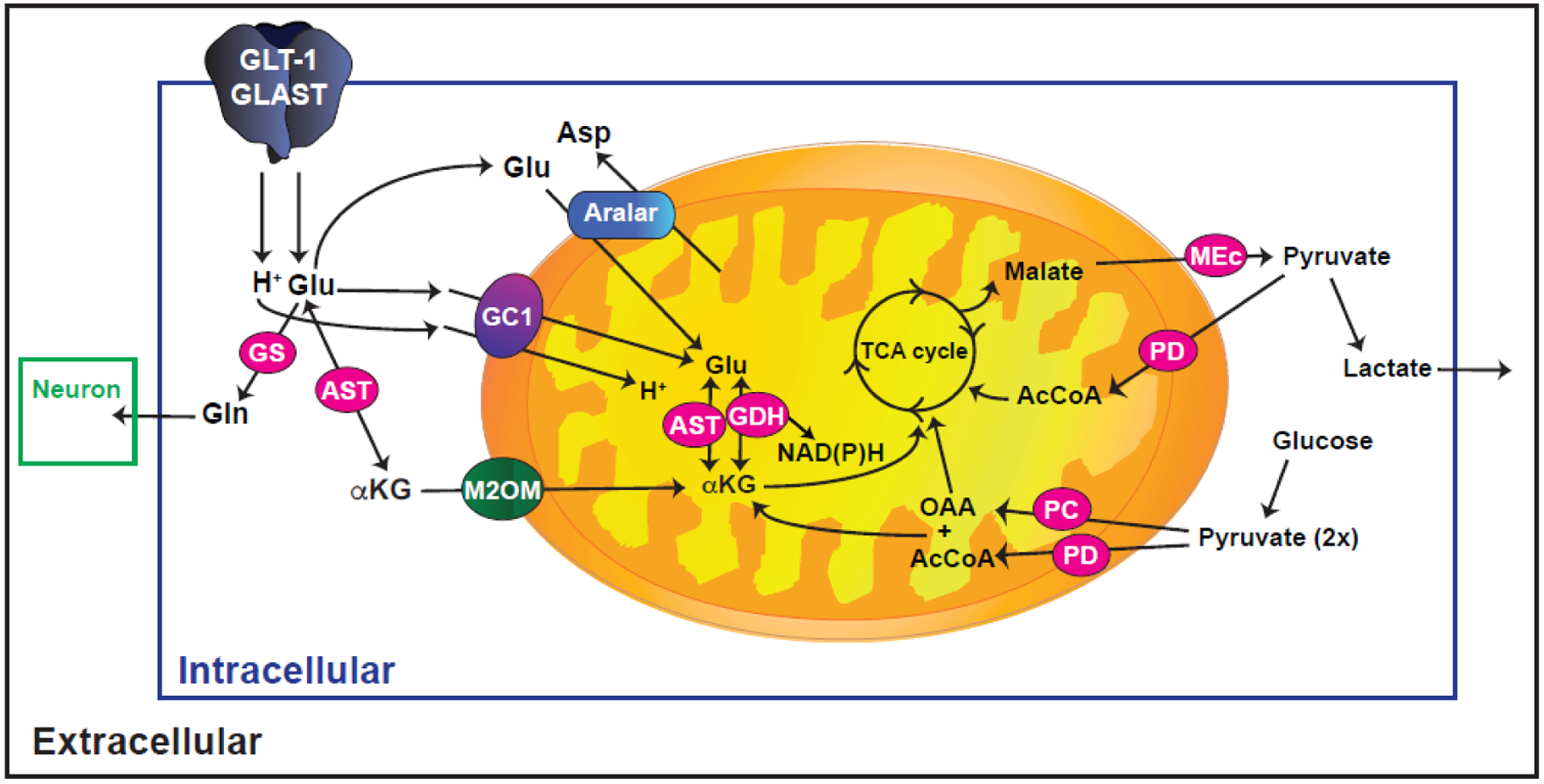Fig. 2.

Schematic illustration of glutamate metabolism in astrocytes. In the cytosol, glutamate (Glu) can be transformed into glutamine (Gln) by glutamine synthetase (GS). This Gln is released into the extracellular space for subsequent transport into neurons and replenishment of neuronal Glu. Glutamate can also be transformed into α-ketoglutarate (αKG) by cytosolic aspartate aminotransferase (AST) which is transported into mitochondria via the mitochondrial 2-oxoglutarate/malate carrier protein (M2OM/Slc25a11). Glu can also be transported into mitochondria directly, either by glutamate carrier 1 (GC1) or by the glutamate/aspartate exchanger (aralar). In mitochondria, Glu is transformed into αKG by AST or by glutamate dehydrogenase (GDH). αKG is converted to malate which is exported into the cytosol and converted to pyruvate via malic enzyme (MEc) that can either be converted to lactate or to acetyl CoA by pyruvate dehydrogenase complex (PD) for complete oxidation. Glu (five carbon backbone) is replenished by converting pyruvate to oxaloacetate (OAA) by the astrocyte specific enzyme pyruvate carboxylase (PC) and the OAA is converted to αKG. The αKG can be converted to glutamate by either AST or GDH.
